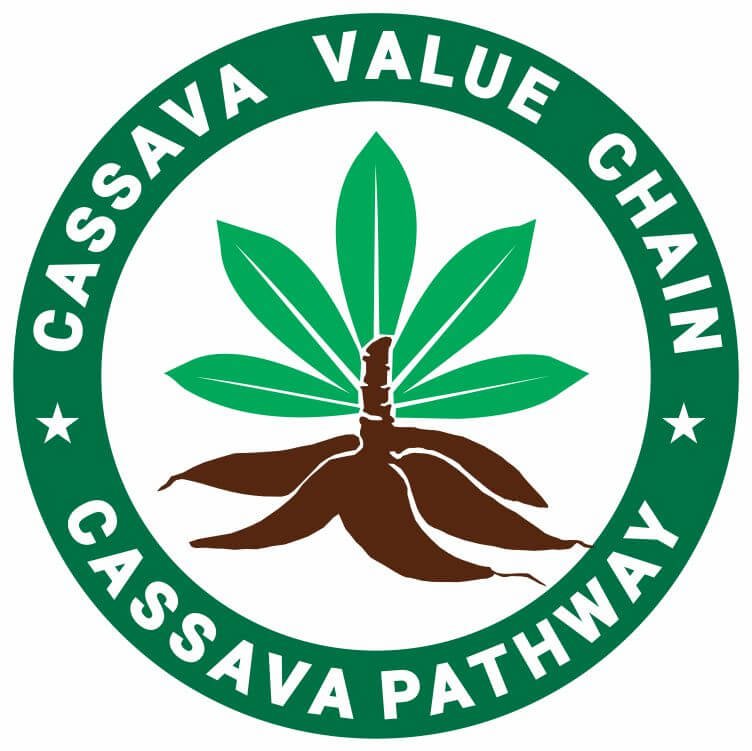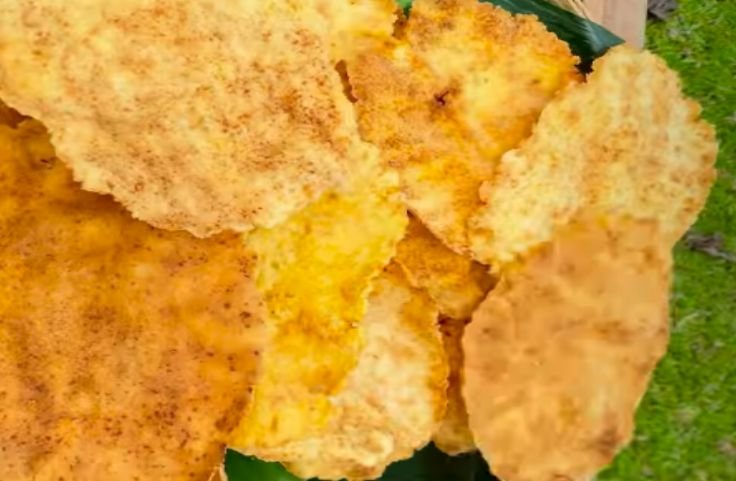Cassava crackers pack a familiar crunch straight from the whole root. From savory to spiced, they’re the snack that brings earthy flavor and satisfying texture to every crispy, addictive bite.
Cassava crackers have become a popular choice for those seeking a healthier snack that doesn’t compromise on crunch or flavor.
Their light, crisp texture makes them enjoyable on their own or paired with dips and spreads.
Naturally gluten free, they cater to a wide range of dietary needs, including celiac disease and gluten sensitivity.
The fiber content supports fullness, making them a smart option for mindful eating.
With demand for snacks that combine nutrition and taste on the rise, cassava crackers fit perfectly into balanced lifestyles.
They are enjoyed by health-conscious consumers, families, and anyone wanting a satisfying bite between meals.
As more people choose snacks made from whole food ingredients, cassava crackers continue to stand out as a flavorful and nourishing option for everyday enjoyment.
Table of Contents
- What Are Cassava Crackers Made Of?
- How Cassava Crackers Are Made
- Taste and Texture: What to Expect
- Health Benefits of Cassava Crackers
- Are Cassava Crackers Safe? What About Cyanide?
- Cassava Crackers vs Other Crackers
- Popular Ways to Serve Cassava Crackers
- Conclusion
What Are Cassava Crackers Made Of?
Cassava crackers are made from the whole cassava root, also called manioc or yuca, which retains its natural fiber and nutrients.
This sets them apart from tapioca crackers, which use only cassava starch.
The process starts with finely grated or ground cassava mixed with a moderate amount of oil for crunch and moisture.
Seasonings such as salt are standard, while herbs like rosemary or thyme, chili powder, garlic, or seaweed can be added for varied flavors.
Using the whole root gives these crackers a robust texture and richer taste, making them appealing to health-conscious snackers.
Their ability to accommodate a wide range of seasonings allows for both savory and spicy versions, making them a versatile and satisfying snack choice.
How Cassava Crackers Are Made
Cassava crackers bring you a satisfying crunch and a mild, earthy flavor that pairs well with many seasonings.
Here is how they are prepared using different methods.
Sun Drying and Frying for a Classic Taste
You start with peeled and grated cassava, spread thin under the sun to dry completely.
This drying step deepens the natural flavor and makes storage easier. Once dried, the pieces are fried until golden and crisp.
In many cultures, such as Indonesia with its keripik singkong, spices or chili sauces are added for extra flavor.
This traditional approach gives you a richer taste and a texture that breaks with a satisfying snap in every bite.
Baking for a Lighter Option
Baking uses less oil yet still delivers a crunchy bite. You prepare cassava dough from grated or ground cassava, season it, and spread it thin before baking.
This method lets you enjoy the full flavor of cassava without the heaviness of deep frying.
It is also suitable for gluten-free diets since cassava naturally contains no gluten.
The gentle dry heat from baking helps maintain the natural aroma while producing a crisp and flavorful snack.
Air Frying for a Modern Twist
Air frying gives you the texture of fried crackers but with far less oil.
You prepare the cassava pieces as you would for baking, then cook them in an air fryer until crisp.
The circulating hot air cooks the crackers evenly and keeps them light while locking in flavor.
This option is popular with people who want to keep fat content low while still enjoying the satisfying crunch and taste that cassava crackers are known for.
Related Posts
Sabudana Thalipeeth: What is It?
Tapioca Dumplings: A Gluten-Free Delight with Global Flavor
Sabudana Kheer Recipe: The Indian Comforting Staple
Taste and Texture: What to Expect
When you bite into the crackers, you notice more than just crunch. The flavor and mouthfeel work together to create a snack you can enjoy in many ways.
Earthy and Nutty Flavor with a Hint of Sweetness
Crackers from grated cassava carry a mild, earthy taste with a gentle nuttiness and a subtle touch of sweetness.
This natural flavor from cassava makes them enjoyable on their own and easy to season with spices or herbs.
You might find them paired with chili, garlic, or rosemary for added depth.
Their balanced taste works with both savory and sweet toppings, giving you room to experiment with dips, cheeses, or spreads without overpowering your palate.
A Crunch That Holds Its Shape
Compared to wheat or rice crackers, crackers from grated cassava feel thicker and sturdier in your hand.
That thickness gives you a stronger crunch and a base that can hold heavier toppings without breaking.
This texture makes them perfect for loading with guacamole, hummus, or cheese.
Each bite feels full and satisfying, giving you a snacking experience that feels more like a small meal than a quick bite.
Why You Enjoy the Bite
The first reason you keep coming back to these crackers is the crunch. It is firm, even, and enjoyable from start to finish.
The second is how well they work with a variety of pairings, from creamy dips to sharp cheeses.
Lastly, you enjoy knowing they come from whole food ingredients, aligning with clean eating habits.
Together, these qualities make the crackers more than just a snack; they become part of a mindful and enjoyable eating routine.
Related: Cassava Tortillas: A Simple, Gluten-Free Staple
Health Benefits of Cassava Crackers
Crackers from grated cassava give you a satisfying crunch while offering nutritional benefits that fit into a balanced diet.
Here is how they can support your health in simple and practical ways.
Supports Digestive Health
Cassava crackers are rich in fiber that helps keep your digestion steady.
Fiber aids bowel regularity and may reduce the risk of certain conditions.
Adding them to your diet supports gut health while giving you a filling snack that lasts.
Gluten Free and Grain Free
You can enjoy the crackers without worrying about gluten or grains.
This makes them ideal if you have celiac disease or gluten sensitivity, giving you a safe and tasty snack option.
Lower Fat Preparation Options
Crackers from grated cassava can be made with minimal oil through baking or air frying.
This lets you enjoy the crunch without too much fat, keeping your snacking light and balanced.
Related: Can Diabetics Eat Tapioca Pudding?
Are Cassava Crackers Safe? What About Cyanide?
Cassava crackers are generally safe when made from properly processed cassava.
The root contains naturally occurring cyanogenic glycosides, which can release cyanide if cassava is eaten raw or improperly prepared.
Sweet cassava has lower toxin levels and becomes safe with basic cooking, like boiling or baking.
Bitter cassava contains more toxins and requires thorough peeling, soaking, and cooking to remove them.
Commercially produced crackers follow strict food safety standards, using treated cassava to eliminate harmful compounds.
These measures ensure the product is safe for most people when eaten in moderation as part of a balanced diet.
Awareness of cassava’s proper preparation helps you enjoy its flavor and texture without concern.
By relying on trusted brands and regulated products, you can confidently include crackers from cassava in your snack choices while benefiting from their taste and nutritional value.
Related: Simple recipe for vegan cassava flour waffles without eggs
Cassava Crackers vs Other Crackers
Cassava crackers give you a different snacking experience compared to tapioca, potato, and rice crackers.
Here is how they compare in taste, texture, and nutrition.
Cassava Crackers vs Tapioca Crackers
Cassava crackers are made from the whole cassava root, keeping more fiber, vitamins, and minerals intact.
Tapioca crackers come from cassava starch, which makes them lighter but less nutritious.
Both are gluten-free, but crackers from the whole root feel heartier and more filling.
Their sturdy crunch makes them perfect for heavier toppings like cheese or hummus, while tapioca crackers tend to suit lighter dips.
If you want more nutrition and satiety from your snack, cassava crackers have the advantage.
Cassava Crackers vs Potato Crackers
Potato crackers can have a richer taste due to higher fat content and added flavorings, but they may also include preservatives or artificial ingredients.
Crackers from whole cassava root provide a cleaner option with a natural nutty note and balanced texture.
They are satisfying without being oily, making them appealing for mindful snacking.
Their crunch holds up well with spreads or vegetables, offering both enjoyment and substance.
If you prefer a lighter fat content without losing flavor, crackers from cassava work well.
Cassava Crackers vs Rice Crackers
Rice crackers are gluten-free and can be lower in calories, but they are sometimes less filling and may contain added sugars or seasonings.
Cassava crackers deliver a sturdier crunch and a fuller mouthfeel, giving you a more satisfying bite.
Their subtle, earthy taste blends well with both sweet and savory pairings, from nut butter to salsa.
While rice crackers can be a lighter choice, cassava crackers bring a balance of texture, flavor, and satiety that fits a wide range of snacking occasions.
Popular Ways to Serve Cassava Crackers
Cassava crackers give you plenty of ways to enjoy their crunch and flavor.
You can eat them plain, pair them with dips, or use them to add texture to different dishes.
Eating Cassava Crackers on Their Own
You can enjoy cassava crackers straight from the pack. Their natural taste and satisfying crunch make them a quick snack that does not need any extras.
They work well when you want something simple yet filling.
Keep them handy for road trips, office snacks, or late-night cravings.
The fiber from the whole cassava root helps keep you fuller for longer compared to refined snacks.
Eating them plain also lets you appreciate their subtle nutty flavor without distraction.
Pairing Cassava Crackers with Dips
Cassava crackers pair well with dips that balance their crisp texture.
Try them with hummus for a creamy and savory contrast or guacamole for a fresh and zesty bite.
Their sturdy base holds up to thicker dips without breaking, making them perfect for party platters or shared snacks.
You can also try salsa, bean dip, or even yogurt-based spreads to change the flavor profile.
The crackers’ mild flavor absorbs seasoning from the dips, making each bite more satisfying.
Using Cassava Crackers as a Topping
Crushed cassava crackers make a great topping for soups and salads.
Sprinkle them over creamy tomato soup, vegetable broth, or chowder for added crunch.
On salads, they replace croutons while keeping your dish gluten-free.
Their texture works well with leafy greens, grilled vegetables, and proteins like chicken or fish.
You can also mix them into grain bowls for an extra layer of flavor and crunch.
This simple addition turns everyday meals into more enjoyable eating experiences.
Conclusion
Cassava crackers bring together taste, texture, and nutrition in one satisfying bite.
Their whole-root base provides fiber, natural flavor, and a sturdy crunch that pairs well with sweet or savory toppings.
You can enjoy them as a quick snack, add them to meals for extra texture, or pair them with dips for a richer flavor.
Being naturally gluten-free, they fit into various diets without compromising satisfaction.
With lower-fat preparation options like baking or air frying, they meet the growing demand for healthier snacks.
Proper processing ensures they are safe to eat while keeping their natural qualities intact.
As more people look for snacks made from real ingredients, cassava crackers continue to hold their place as a dependable and flavorful choice for everyday enjoyment.
References

Chimeremeze Emeh is a writer and researcher passionate about Africa’s most transformative root crop—cassava. Through his work at cassavavaluechain.com, he explores the entire cassava industry, from cultivation and processing to its diverse applications in food, health, and industrial use.
He also writes for palmoilpalm.com, where he shares his extensive experience and deep-rooted knowledge of palm oil, covering red palm oil, palm kernel oil, and refined products. His work there reflects his lifelong connection to agriculture and his commitment to promoting sustainable value chains in Africa.
Driven by curiosity and purpose, Chimeremeze aims to shed light on how cassava continues to empower communities, strengthen food systems, and link traditional farming wisdom with modern innovation.

